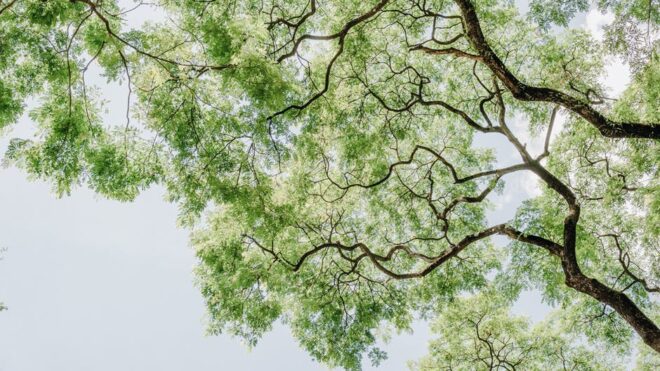Some people like to say that good fences make good neighbors. But for many homeowners, that phrase might be better if ‘fences’ is replaced with ‘trees’.
Neighbors get into disputes all the time. Perhaps your neighbor’s dog barks all night, or your neighbors park in front of your driveway. Often, a friendly chat can solve these differences. However, sometimes the situation escalates and winds up in court or in the office of a mediator.
One of the most significant sources of conflict between neighbors is trees. Trees along a property line can be confusing. Who is responsible for cutting overhanging tree branches? Who gets the harvest from fruit trees?
If you have trees near your property line, keep reading to learn more about your responsibilities and your neighbor’s.
Know the Tree Laws in Your State
If you have a questionable tree, there are some experts you can contact. One of those is a tree lawyer. Yes, tree lawyers are a thing, and they help homeowners abide by the state’s tree laws, like these laws in Washington.
Many of these laws state that cutting down or injuring a tree that doesn’t belong to you is a crime. The law further states there can be a fine levied if you cause damage to the tree. This fine could be as high as three times the estimated value of the tree.
As you might expect, tree laws are vague and often very dated. But this doesn’t stop a judge from interpreting those laws as they are written and rendering a judgment.
These laws also apply to trees growing on property lines. So keep in mind that the “you break it, you buy it” rule does apply to trees.
Know Your Property’s Boundaries
When you purchased your home, you likely had a survey done. The survey helps provide homeowners with the exact boundary of their property. The survey will also indicate if you have trees straddling the property line between you and your neighbor.
For some homeowners, the tree(s) is not an issue. This is especially true for those who live in rural or heavily wooded areas. What’s one more tree when you live in a forest?
But if the tree in question lies directly on or very near the property line and the tree is too close to structures, there might be some questions.
Tree branches aren’t the only issues presented when a tree stands on a property line. Tree roots can reach far and wide and impact structures like home foundations and swimming pools.
Consult your plot plan before starting a conversation with your neighbor. Most tree disputes end with little fuss but having your plot plan in hand can help prove your point.
Who Is Responsible for Cutting Overhanging Tree Branches?
Regarding a property line tree, the State of Washington says that either neighbor can trim growth that encroaches onto their property. If your neighbor likes the shade, they can keep the mature growth on their side.
If you prefer not to have shade in that particular spot you can trim the branches on your side.
The main issue here is damage to the tree. Improper pruning techniques can cause fatal damage to the tree or invite insect infestation, leading to further damage.
If the tree dies due to trimming on your side of the property, you can be held liable for those damages. But since it’s not only you who is responsible for cutting overhanging branches, it’s best to talk with your neighbor before you begin cutting.
If you agree on tree trimming that doesn’t damage the tree and makes you both happy you’ve successfully reached an agreement to keep you out of court and save money.
The Fruits of Your Labor
Sometimes tree disputes involve fruit trees. When a fruit tree grows on a property line, each owner is allowed to pick the fruit that grows on their side.
But what if you’re not interested in picking the fruit or dislike the fact that the fruit falls in your yard?
In cases like this you can either clean up the fruit or you can trim the overhanging branches. You’ll want to be cautious if you choose the latter.
Fruit trees can be much more sensitive to pruning. Cutting those branches too far back or during the wrong time of year can easily damage the tree.
Again, when you’re faced with these issues talk to your neighbor first. You can ask them if they’d like to pick the fruit on your side to avoid conflict.
However, if you want to remove the fruiting branches, consult with a tree trimming expert.
Talk to a Local Arborist About Property Line Trees
Arborists see situations like these all the time. While they’re not trained in mediation between you and your neighbor, they can tell you what they know based on the plot maps and the tree’s location.
They can also locate tree roots and estimate if they’re a potential threat to structures.
Lastly, they’re can trim the tree safely and healthily. They’re also able to trim each side to suit each homeowner. Your arborist may even act as a mediator by explaining tree laws and finding a solution to the problem.
Perhaps Good Trees Do Make Good Neighbors!
Are you experiencing conflict with a neighbor over a tree? Now that you know who is responsible for cutting overhanging branches, talk to your neighbor about a mutually beneficial solution.
Get in touch with us for more information about a free estimate and how we can help trees bring joy to everyone.

